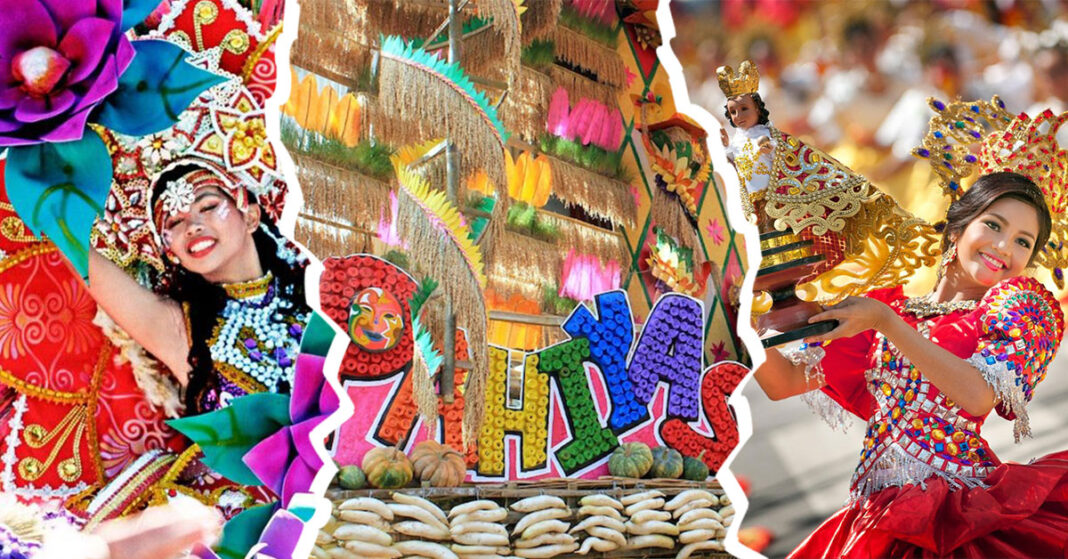The Philippines is a country known for its vibrant and diverse culture, as well as rich traditions. Among the most captivating aspects of Filipino culture are its colorful festivals. These celebrations are not just a feast for the eyes but also a window into the heart and soul of the Filipino people. So in this blog, we will take you on a virtual tour of some of the most colorful festivals in the Philippines, showcasing their unique charm, history, and significance.
Related: The 11 Must-Experience Food Festivals in the Philippines
1. Sinulog Festival – Cebu City
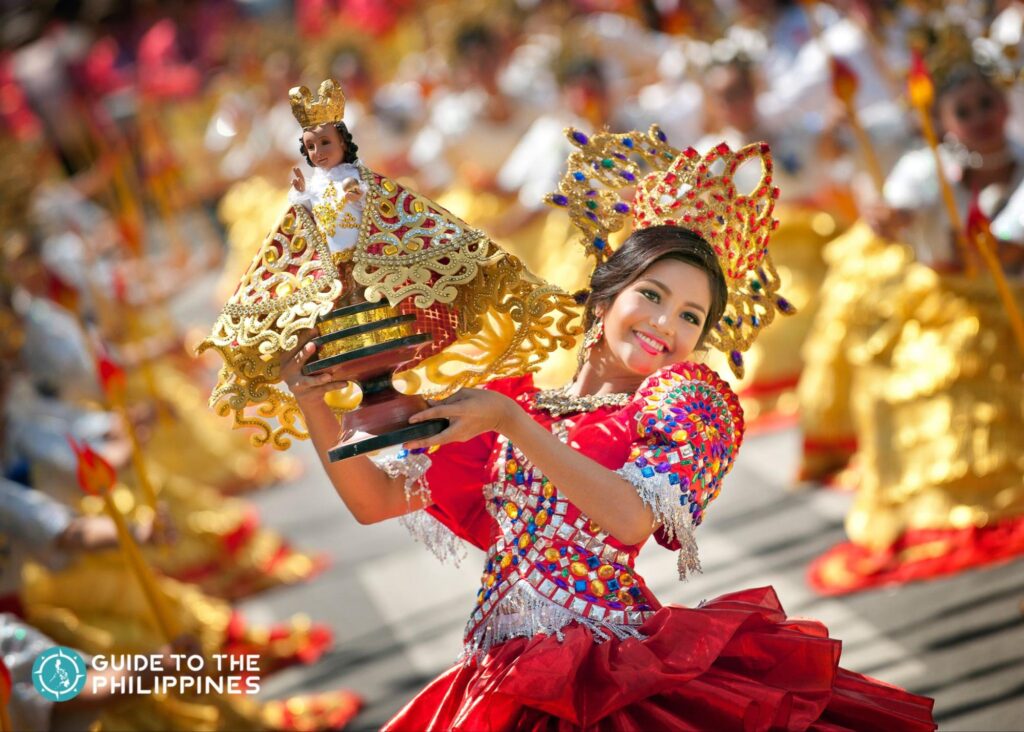
Sinulog Festival, held every third Sunday of January in Cebu City, is one of the grandest and most famous festivals in the Philippines. It celebrates the country’s conversion to Christianity and honors the Santo Niño, a statue of the child Jesus. The highlight of the festival is the Sinulog Grand Parade, where thousands of participants dressed in vibrant costumes dance to the rhythm of the drums. The streets come alive with a sea of colors, making it a truly mesmerizing spectacle.
2. Panagbenga Festival – Baguio City
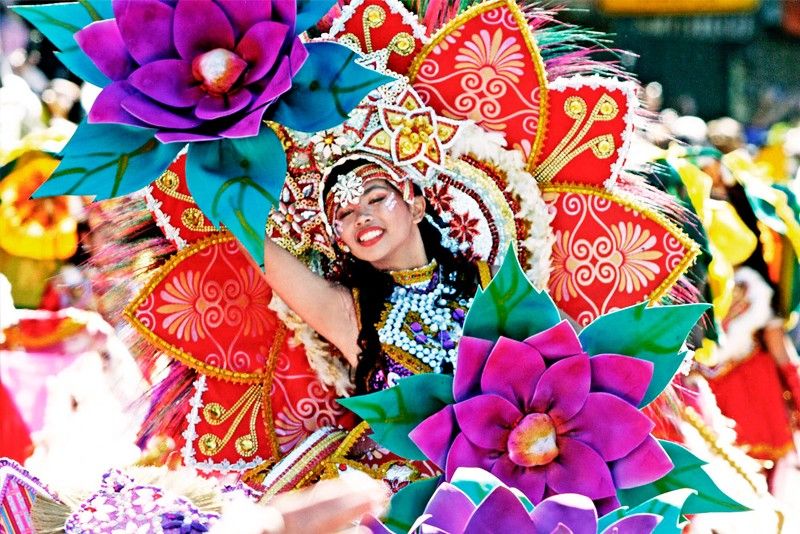
Known as the “Flower Festival,” Panagbenga is an annual event held in Baguio City during the month of February until the first week of March. This festival showcases a parade of extravagant floats adorned with beautiful and vibrant flowers. It celebrates Cordillera region’s diverse cultural legacy by highlighting the blooming flowers, featuring street dancing, floral floats, and a grand fireworks display. During this time, the streets of Baguio are transformed into a floral wonderland, offering a breathtaking sight for visitors.
3. Pahiyas Festival – Lucban, Quezon
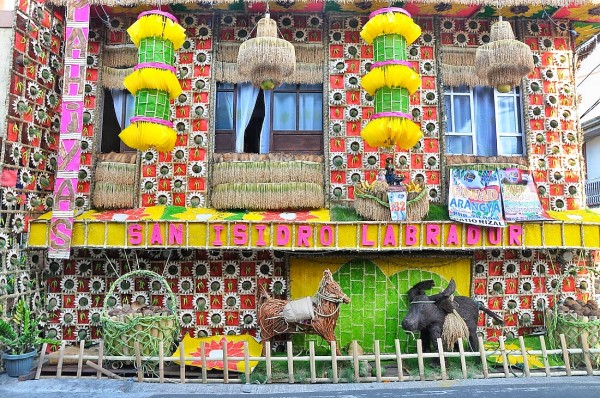
Pahiyas Festival, celebrated every 15th of May in Lucban, Quezon, is the biggest, most colorful harvest festivals in the country. Unlike other festivals that use colorful costumes and parades, Pahiyas is all about vibrant decorations made from agricultural products.
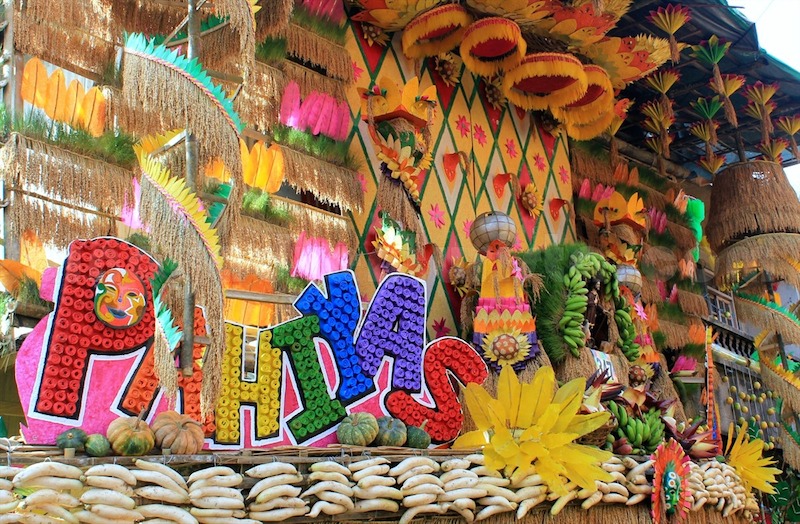
Houses are adorned with colorful rice grains, fruits, vegetables, and other local produce. It’s a competition among residents to create the most beautiful and creative displays. This festival is a visual feast that also promotes gratitude for the bountiful harvest.
4. Pintados-Kasadyaan Festival – Tacloban City
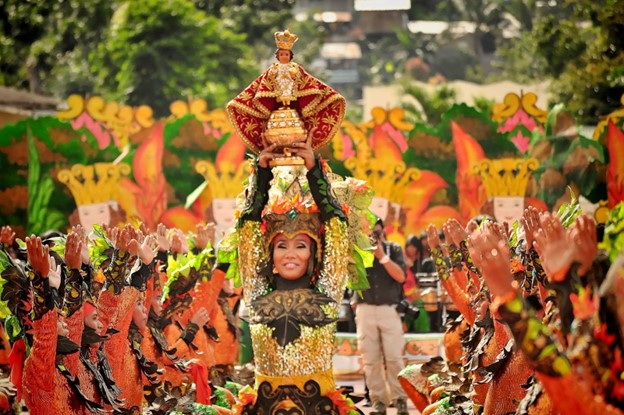
The Pintados-Kasadyaan Festival in Tacloban City is celebrated in June and is a blend of indigenous and religious traditions, in honor of the old “pintados” warriors who used to paint their bodies. The festival features warriors painted in colorful designs, celebrating their ancestors’ bravery and resilience. It also highlights the region’s rich cultural heritage with street dances, drumming, and vibrant costumes. The Pintados-Kasadyaan Festival is a lively and colorful tribute to Visayan culture.
5. Kadayawan Festival – Davao City
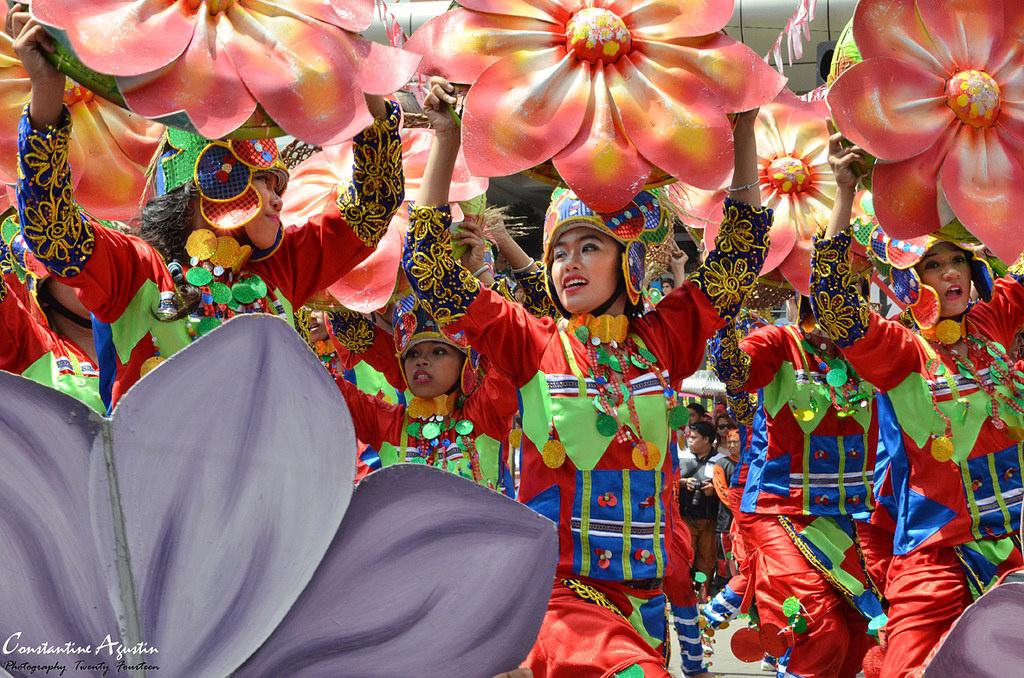
Davao City’s Kadayawan Festival, held annually in the third week of August, is a week-long celebration of the city’s cultural heritage, bountiful harvests, and appreciation of the indigenous people of Mindanao. The streets come alive with colorful floats, street dancing, and music. One of the highlights is the Indak-indak sa Kadalanan, a street dance competition featuring extravagant costumes and intricate choreography. Kadayawan showcases the diversity and unity of the people in Davao, making it a truly colorful and meaningful festival.
6. Ati-Atihan Festival – Kalibo, Aklan
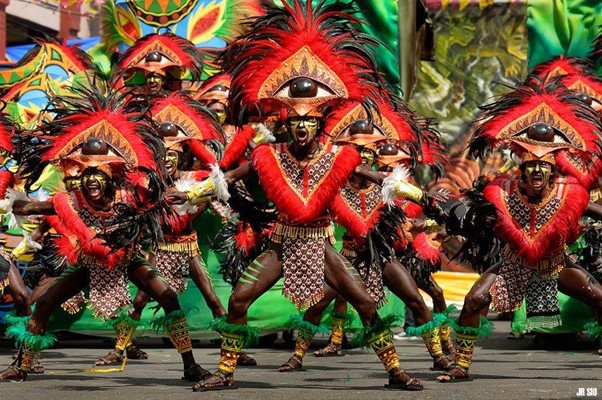
Held in January in Kalibo, Aklan, the Ati-Atihan Festival is often called the “Mother of All Philippine Festivals.” It’s a vibrant homage to the Ati people, who were native settlers in the island, as well as their cultural customs and lifestyle. This festival also honors the Santo Niño, and the Ati community’s way to express their gratitude for all the blessings they have received. During the parade, people paint their entire body with black to represent the Ati people. Alongside that, they paint their faces with intricate designs, and dance to the rhythm of drums. You can definitely see the richness of culture in this festival!
7. Masskara Festival – Bacolod, Negros Occidental
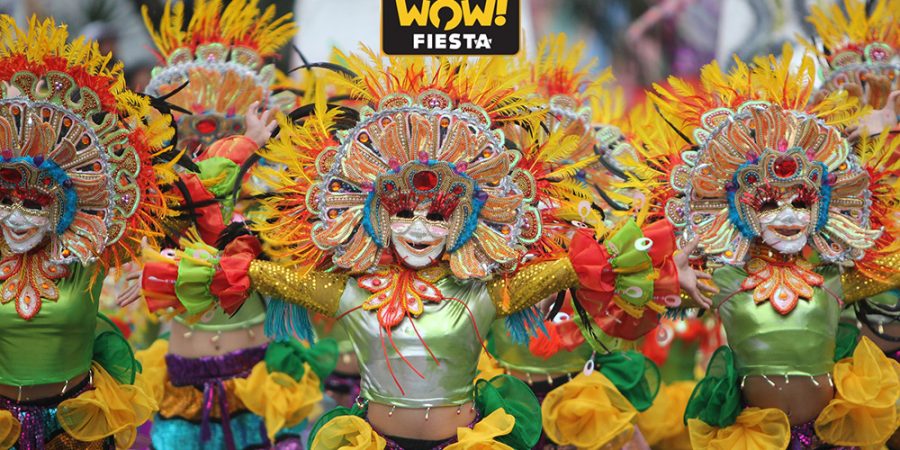
The Masskara Festival in Bacolod, Negros Occidental, is one of the most awe-inspiring festivals in the Philippines, and celebrated annually in October. It is known as the “Festival of Smiles” and originated as a response to economic challenges, symbolizing the resilience of the Filipino spirit.
The festival features participants wearing colorful masks adorned with cheerful, exaggerated smiles, representing the ability to find joy even in adversity. Street dancing competitions with thousands of masked performers and a range of other festivities make the Masskara Festival a vibrant and emotionally uplifting celebration, highlighting the Philippines’ rich cultural heritage and unshakable optimism.
8. Sunflower Festival – Ligao City, Albay
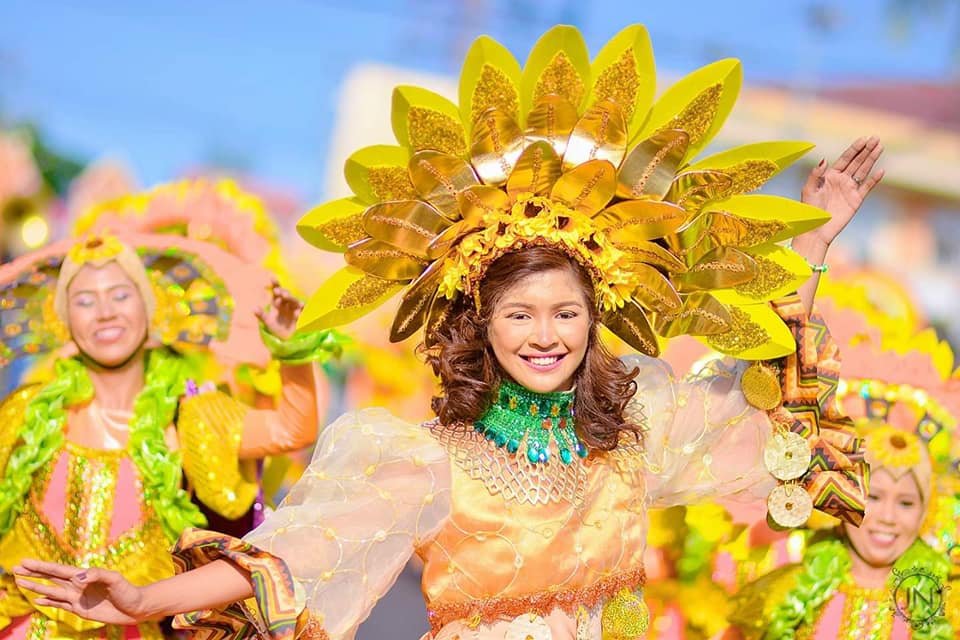
The Sunflower Festival in Ligao City, Albay, is a vibrant celebration held every March that pays tribute to the stunning sunflower fields in the region. Visitors can wander through fields of brilliant yellow blooms, take in the natural beauty, and participate in various activities like sunflower picking and photography contests. This colorful festival offers a unique opportunity to revel in the splendor of sunflowers, hence why it is a must-visit event for nature enthusiasts and photographers alike.
The Philippines is a land of festivals, each one bursting with colors, energy, and a deep cultural significance. Whether you’re a traveler seeking vibrant experiences or simply want to explore the Philippines’ rich traditions, attending one of these colorful festivals is a must — as these celebrations not only offer a visual treat, but also provide a glimpse into the heart and soul of Filipino culture.

